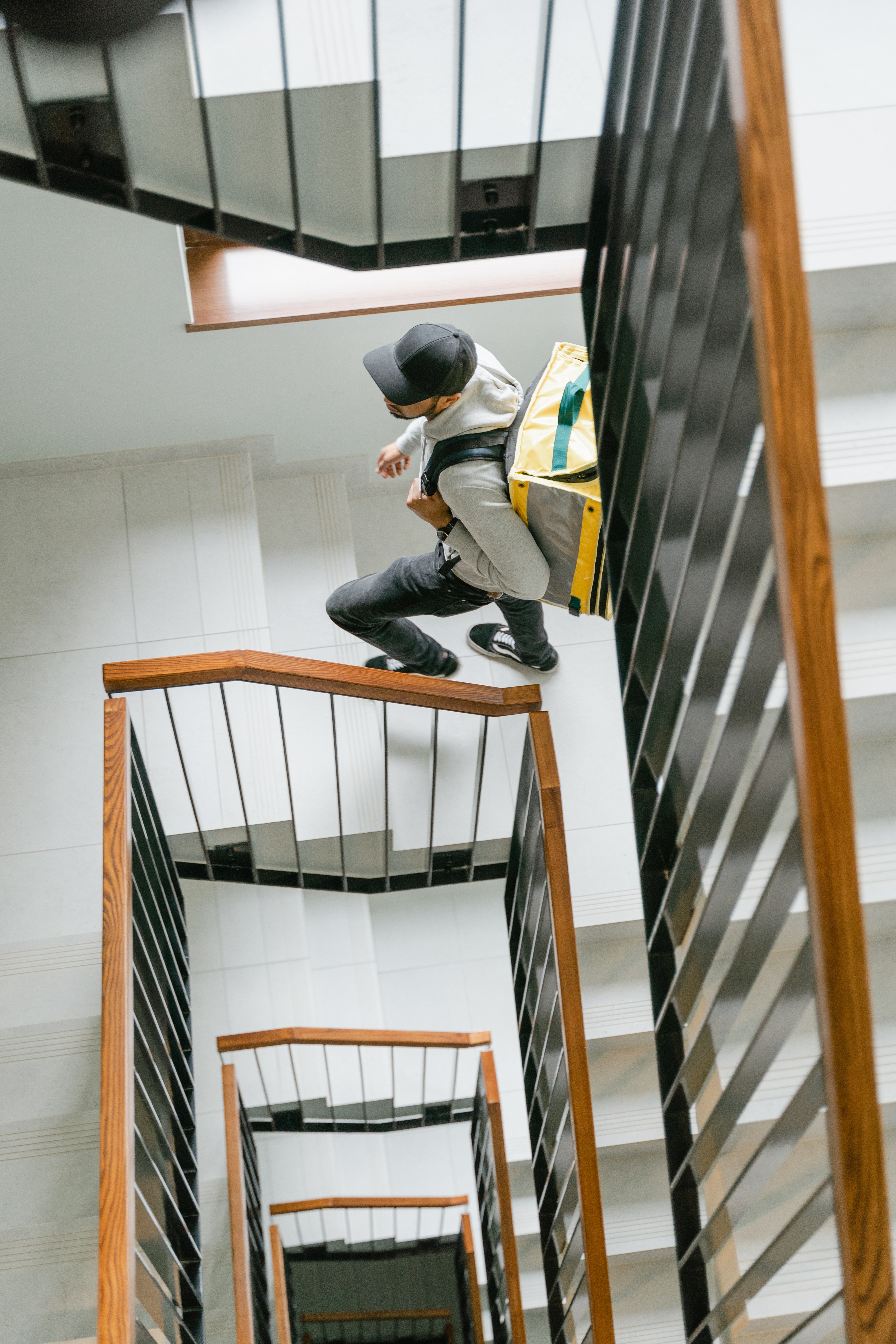I had the opportunity to visit our nation’s capital this week, Washington, DC. My first time in this part of the country offered picturesque views of the trees changing colors, of leaves from umber orange to crimson red. Businesspeople clad in warm coats, scarves, and beanies steadily kept a rigorous walking pace up and down the boisterous streets as horns honked at people jaywalking. Museums, monuments, and memorials presented their historical significance and breathtaking detail as we toured the national mall. This experience truly made me appreciate the history of America and the efforts it took our predecessors to bring us here to enjoy our present-day society. Along with all the history, amazing sites, and jaw-dropping food, there was one more addition to this busy city that was far different from my hometown of Napa, California. Washington, DC, has a lot of stairs.
These stairs presented themselves in various sizes, materials, and distances. The height of the stairs could be anywhere from three to twelve inches. Stairways to the footsteps of the capital could be thirty yards of only moderate elevation with a slight angle. However, when visiting the Rotunda, the height of the steps dwarfed some of the other stairs. Even though there may have only been thirty steps, the incline was akin to hiking a steep mountainside. My mode of physical activity went from a leisurely walk up the outside of the capital to feeling like an Ibex on the side of a mountain in the European Alps. I could see my fellow tourists running out of breath as they ascended the various flights of stairs. This tour was not only an educational and enlightening experience, but it was also a test of physical strength and endurance.
My experience of seeing the physical demands of a larger city possessing a high concentration of working people on a mission made me appreciate an exercise we conduct with our personal training clients: the “step up” exercise. This exercise is performed where the participant steps onto an inclined surface, anywhere from six to twenty inches, and steps back down. One foot is placed on the inclined step, and the participant drives their heel into the step as one-foot trails to the top, followed by the same foot stepping down and the opposite foot descending to meet the leading foot. We repeat the same sequence with the opposite foot for a set of five to ten repetitions on both legs. This exercise helps strengthen the muscles surrounding the hip, knee, and ankle joints.
The muscles stressed in the step-up exercise adapt to have the potential to produce more force and muscular density. Additionally, balance, foot dexterity, and coordination are improved. Lower-body muscular endurance for stepping movements increases as well. These physiological adaptations aid in the prevention of injury, decrease nagging knee pain, and contribute to decreasing the risk of falling. As a country bumpkin from Napa, California, who doesn’t have this elaborate layout of steps in my hometown setting, I found it fascinating how individuals in the Washington, DC, environment perform this exercise day in and day out. Therefore, they must obtain these muscular adaptations by living their everyday lives in this busy city filled with steps.
Stairs aren’t going anywhere. In fact, as more buildings are constructed, they get taller and usually have more floors. This means there are going to be stairs in our future. When we see a set of stairs next to an escalator or an elevator that only goes up one floor, perhaps taking the stairs would be a better option to benefit our physical wellbeing. Part of living a happy, healthy, and strong life involves adherence to training our body through the productive stress of physical activity. We can achieve significant adaptions that improve our quality of life by taking a flight of stairs. If we get out of breath or fatigued after going up and down the stairs, perhaps we need to take the stairs more.
Sean McCawley, the founder and owner of Napa Tenacious Fitness in Napa, CA, welcomes questions and comments. Reach him at 707-287-2727, napatenacious@gmail.com, or visit the website napatenaciousfitness.com.

